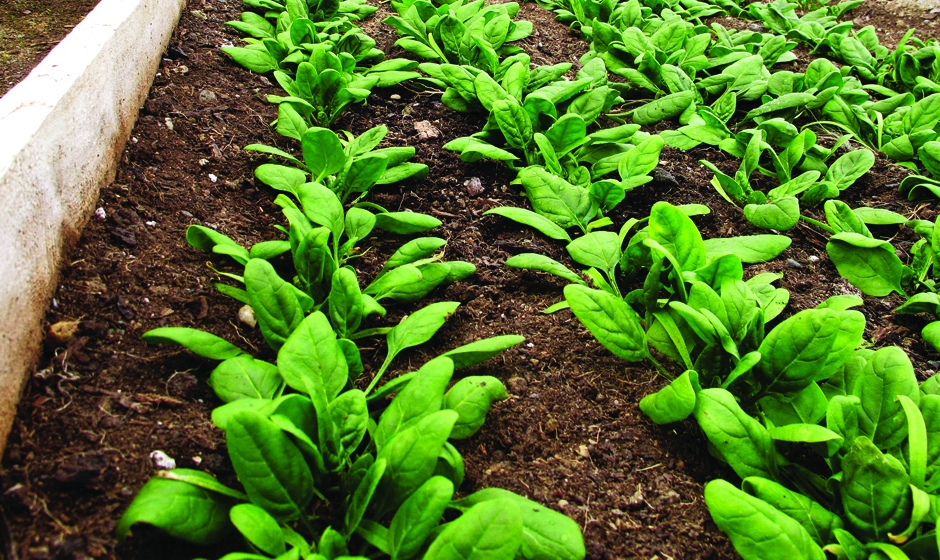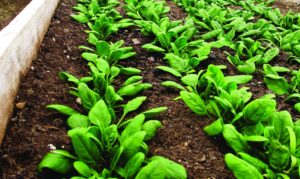
By Alison Caracciolo | Staff Columnist

Before you indulge in finger-licking hot wing, or twirl your fork around a mound of spaghetti, do you ever once think about where your food comes from? We, as humans, consume so much food without ever realizing how the foods we eat were produced or where they originated from.
The slow food movement is just that: It has been a long, highly-controversial debate about the health and safety of the food we consume, which began some 20 years ago. According to MacMillan Dictionary, the slow food movement can be defined as “foods traditionally cooked using organic ingredients, where the food is meant to be enjoyed slowly for maximum benefit.”
Almost all the foods we consume fall under the umbrella of slow foods. Any food that needs to harvested — like many of our fruits, vegetables, meats and grain — are what activists for the slow food movement are trying to promote for natural growth.
With this type of movement, it is hard to ignore the pros and cons of this argument. It is good to be more aware of where your foods are coming from, but, essentially, this movement is trying downsize the amount of fast food chains that seem to be on every street corner.
This movement sparked in Italy. Being that I am currently on Duquesne’s Italian campus, I understand the concern many Italians had when McDonalds invaded a corner by the Spanish Steps in 1986. However, I don’t see the slow food movement ever taking much head over the industrial food industry.
McDonald’s was seen as a threat to many Italian leftists because they believed it would decrease the cultural and authentic style of cooking their foods. These leftist were the ones advocating for the small and local businesses, trying to preserve the traditional ways of cooking and preparing foods.
An Italian leftist journalist, Carlo Petrini, provided a novel approach and started the Slow Food Association that year. The Time considers him a revolutionary who “changed the way we think about food.”
I am not going to argue that slow food doesn’t taste better, but the Time also records that nearly 50 million people were hungry in 2007. We have over 6 billion people on this planet, and the slow food movement may be doing a disservice to more people than they like to admit.
To feed the U.S. alone, we would need 40 million farmers, which would be one million more than we have today, according to the Time. I think too many of us refuse to face the reality in which we live. It would be great if all our foods could be organic, as the slow food activists preach, but the reality of the matter will always outweigh this movement.
There are more working class members of this society, many of which rely on the government for help to feed their families. So who will the slow flood movement really help?
Many people who are on the other side of the movement believe those who support this message are “rich gourmets,” so to speak, that disregard the effects that the slow food movement may have on the majority of middle class and lower income families.
These “rich gourmets,” or rather just highly-trained and skilled cooks, want the best organic products to prepare meals. However, have you ever noticed the price of organic foods are significantly higher than non-organic foods?
Organic farming requires the soil to be rich and clean from pesticides, which in return requires more intensive labor. Farmers have to be highly skilled and tentative to their crops; in other words, it takes more time and uses more money. The food may have a more robust taste and healthier initiatives, but it may also empty our pockets when trying to feed even a small family of three.
According to Joanne Burke from the University of New Hampshire, the top one percent of American households contain 32 percent of the nation’s wealth, while 36.5 million Americans live in poverty. In this case, it doesn’t help that foods within the slow food movement are more considerably expensive than their fast-food counterparts.
To maximize profits, farmers have been max-breeding, or using the same genetics, to create more of the same animals. This means that, more likely than not, you and your family have been preparing essentially the same Butterball turkey since 1960. Many people consider these mass-produced meats as “industrial” meats that have lost the most crucial element of food – taste.
Not only does the slow food movement focus on preserving taste, but it’s a push for foods to be made without harmful pesticides and fertilizer. It also fights for those who are producing the foods to be paid fairly for their work.
I feel the movement is misguided by the attractiveness of the positives it shows, and it disregards the majority of the American population and their current living conditions. There are less people willing or able to pay the higher price for the slow foods.
Fast foods are hazardous to our health, but I don’t foresee the industry declining anytime soon. Next time you pull up to the window of McDonald’s, will you actually think twice about where your food is coming from?



